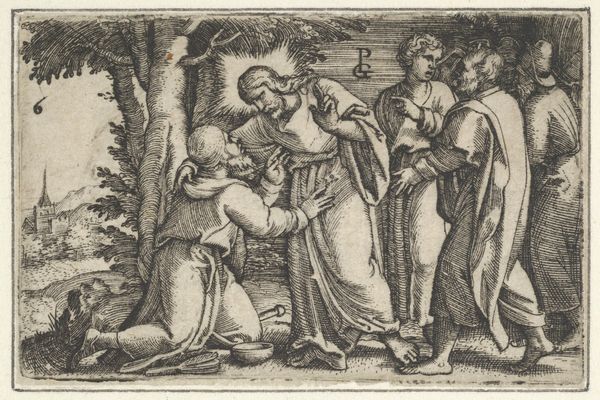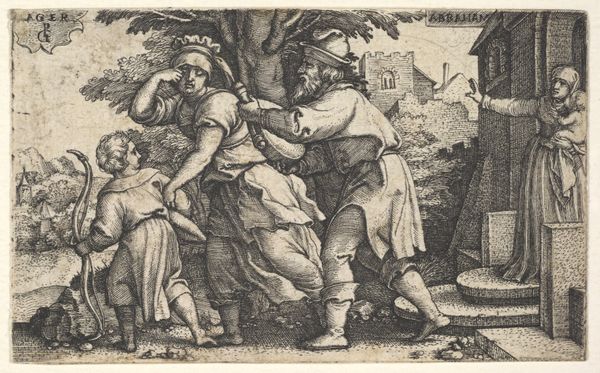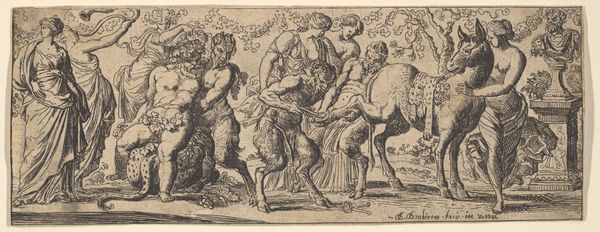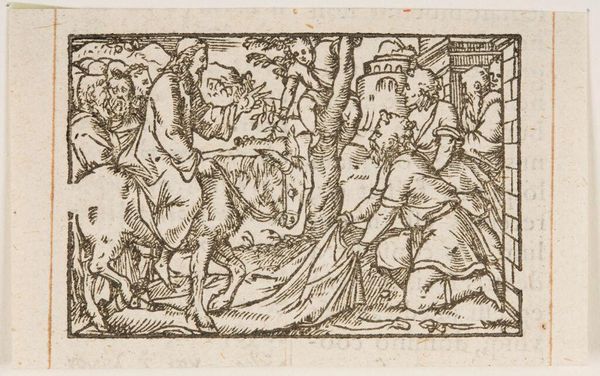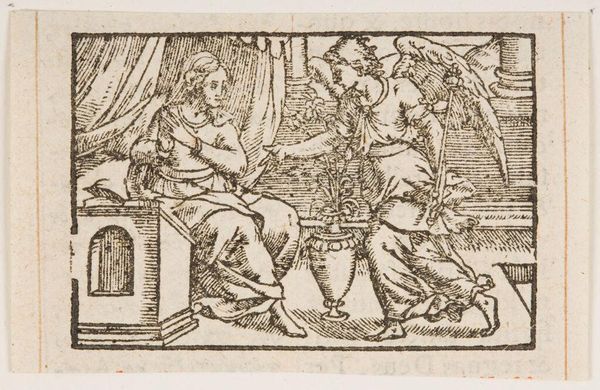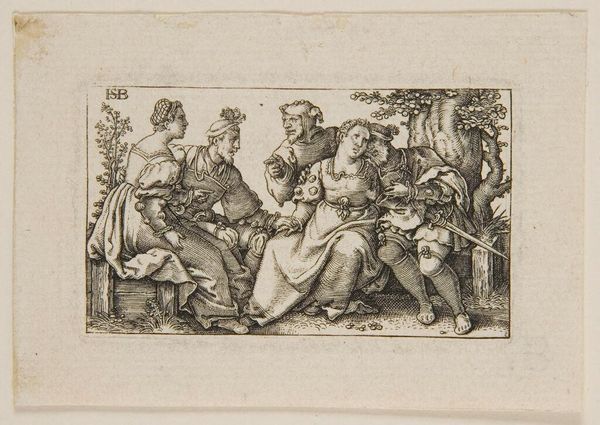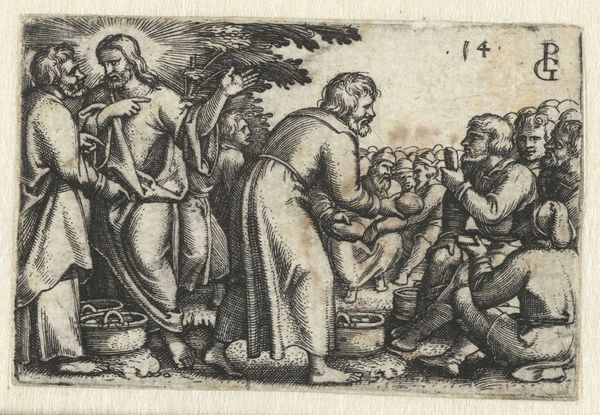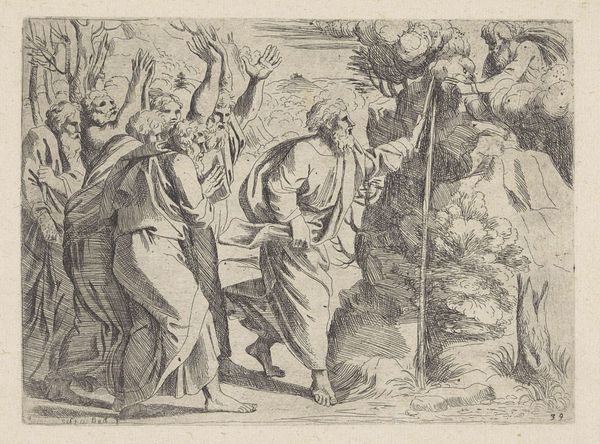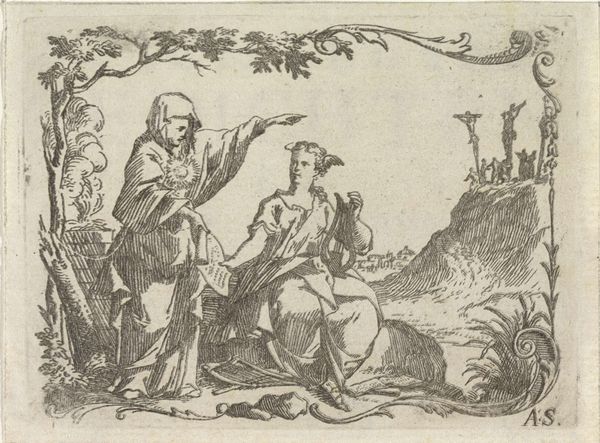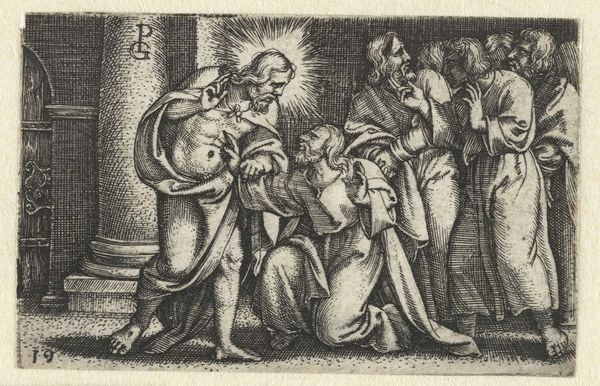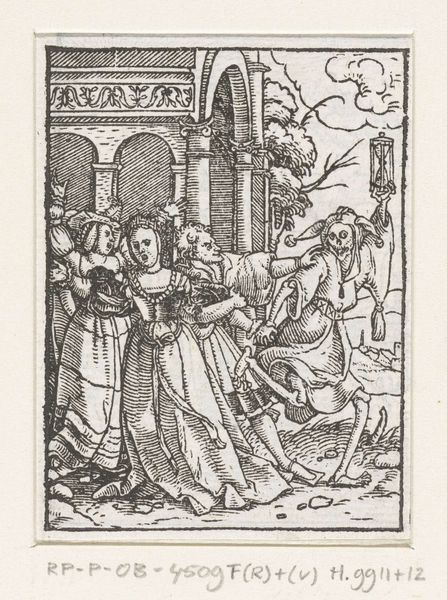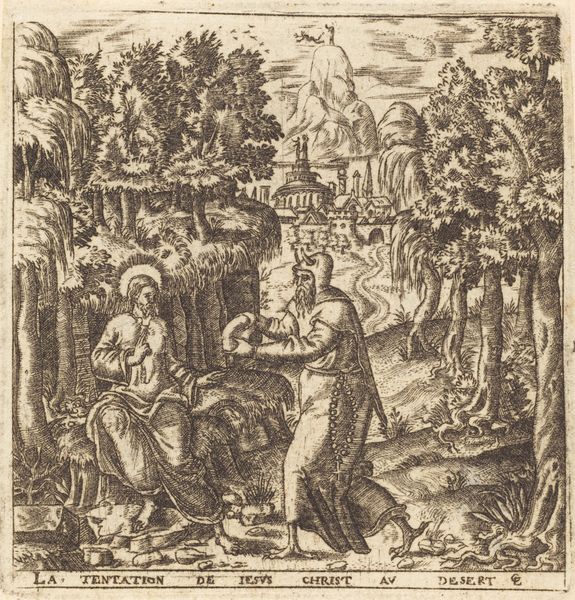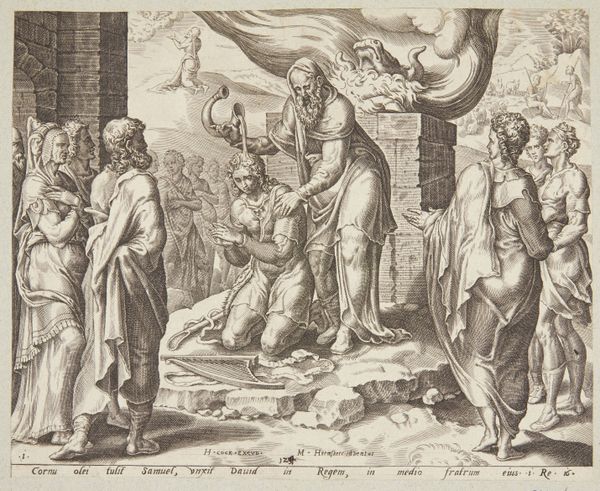
print, engraving
# print
#
figuration
#
history-painting
#
northern-renaissance
#
engraving
Dimensions: height 37 mm, width 57 mm
Copyright: Rijks Museum: Open Domain
Editor: This engraving from 1534 or 1535 by Georg Pencz, titled *Christ Healing a Leper,* is striking in its detail. It’s amazing what he could accomplish with such precise lines. The emotional weight feels concentrated on the two main figures: the supplication of the leper contrasts so strongly with Christ's gentle, yet firm, gesture. How do you interpret the other figures, and the overall composition? Curator: The figures surrounding Christ are key; note their guarded expressions. They represent the societal fear and alienation that leprosy provoked. Pencz places a visual emphasis on their disbelief, subtly questioning established hierarchies. The symbolic 'P' and 'G' hovering above subtly affirms Pencz's presence in this narrative of transformation. How do you see that interplay? Editor: That’s fascinating! So, it's less about a straightforward miracle and more about challenging the social order of the time through a familiar religious story? I also notice that the landscape feels very detailed for just being in the background. Curator: Precisely. The Northern Renaissance often incorporated symbolic landscapes. See that small church in the background? That is there for a reason. In these times, such landscapes grounded biblical narratives in contemporary settings, acting as reminders of moral and spiritual principles that apply to ordinary lives. The tree almost looks ominous and dead as well. Pencz uses familiar imagery, turning these visual symbols into active participants in this historical context. What impact do you think this had on contemporary viewers? Editor: It’s making me reconsider the power of art as cultural critique and historical record. I was focusing on just the figures, but the background definitely adds another layer to it all. Thanks! Curator: Indeed! By exploring how historical memory is embedded within images, we understand not just the past, but also our present. It has been my pleasure.
Comments
No comments
Be the first to comment and join the conversation on the ultimate creative platform.
